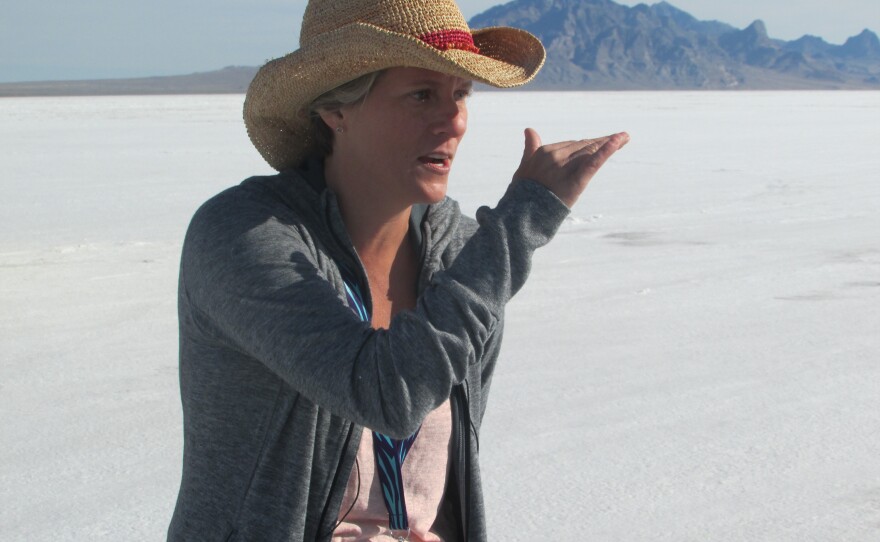Carlos Wheeldon dreamed about the world-famous salt speedway as a child growing up in England. He’s traveled to Utah nine times to be part of the World of Speed race that takes place each fall on the Bonneville Salt Flats in Utah’s West Desert. And this year he’s worried.
“It’s kind of a desperate situation, really,” he says. “I actually don’t think we can bring it back. I think we’re looking at the final years of the Bonneville Salt Flats as a racing area, unfortunately.”
On the horizon a few miles away, a team of young geologists is taking measurements from a hole that’s been bored a few feet through the thick salt.
Scientific research is underway to address the increasing concerns of Wheeldon and others.
A team of young researchers from the University of Utah is logging where the Lake Bonneville floor ends and where the layers of clay, gypsum and salt begin. Other data, like oxygen levels, is important too. The study is even looking at microbacteria. The researchers are exploring the reasons the salt crust is shrinking in breadth and depth.
UofU geoscientist Brenda Bowen leads the study that includes environmental factors, as well as human ones.
“We can look at that level of impact of what we’re doing,” says Bowen, “but we can also understand how is that relative to the scale of geologic change, of natural change, and ecological evolution even beyond what humans are doing.”
Many racers blame the shrinking surface of the salt flats and thinning of its crust on a nearby salt mine that’s helping fund the research.
But Bowen won’t speculate about the causes. The data her team’s collecting may ultimately show the cause is natural, even the racers themselves or a reason that hasn’t even been considered yet.
A recent grant for $1.5 million dollars from the National Science Foundation is expected to help fund the research for several more years and potentially offer better answers.





